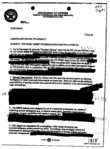Censorship of student media
Censorship of student media pertains to the suppression of free speech by school administrative bodies of student-run news operations. Typically this involves interfering with the operation and final publishing authority of a school newspaper, radio, television or other electronic online content generated by students.
While this has typically consisted of schools enforcing their authority to control the funding and distribution of publications, sometimes forms of censorship extend to expression not funded by or under the official auspices of the school system or college (for example, confiscating independently produced "underground" publications or imposing discipline for material posted on off-campus websites).
United States
The states of Arkansas, California, Colorado, Illinois, Iowa, Kansas, Massachusetts and Oregon have all passed legislation fortifying student journalists' right to free expression.[1] The nonprofit Student Press Law Center tracks and provides pro-bono legal aid to student-run media organizations in the U.S.
Some notable cases in the United States include:
- Hazelwood School District v. Kuhlmeier,1988- A Supreme Court decision that held that public school curricular student newspapers that have not been established as forums for student expression are subject to a lower level of First Amendment protection than independent student expression or newspapers established (by policy or practice) as forums for student expression. [2]
- Tinker v. Des Moines Independent Community School District, 1969[3]
- Rosenberger v. University of Virginia, 1995[4]
- Papish v. Board of Curators of University of Missouri - A Supreme Court ruling that the University of Missouri could not discipline a college student for profanity and "indecent" sexual references in an "underground" publication that she funded and distributed.[5]
- Morse v. Frederick, 2007- A Supreme Court decision in the case of 18-year-old Joseph Frederick, punished for displaying a banner reading "BONG HiTS 4 JESUS" across the street from a school during the 2002 Olympic Torch Relay, concluding that speech promoting illegal drug use during school-sanctioned events is unprotected. [6]
References
- ↑ Student Press Law Center. "Student Press Law center - Law Library". SPLC. Retrieved 2013-11-11.
- ↑ https://www.oyez.org/cases/1987/86-836
- ↑ https://www.oyez.org/cases/1968/21
- ↑ https://www.oyez.org/cases/1994/94-329
- ↑ "Papish v. Board of Curators of the University of Missouri, 410 U.S. 667 (1973)." Papish v. Board of Curators of the University of Missouri, 410 U.S. 667 (1973). Accessed October 11, 2016.
- ↑ https://www.oyez.org/cases/2006/06-278
